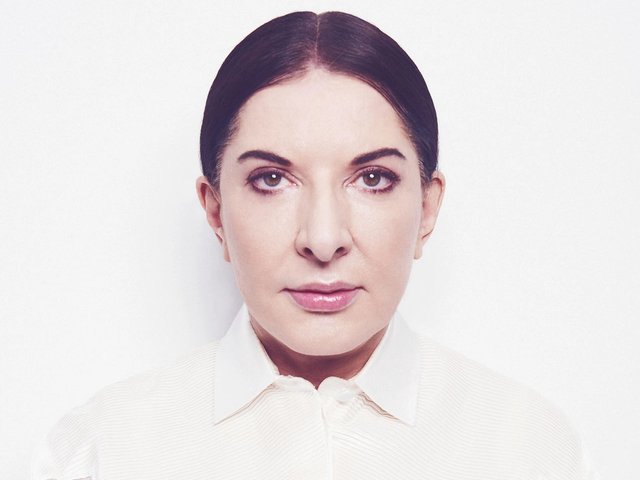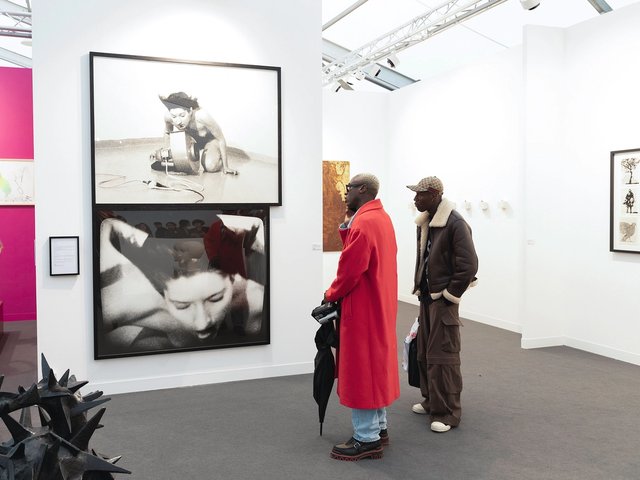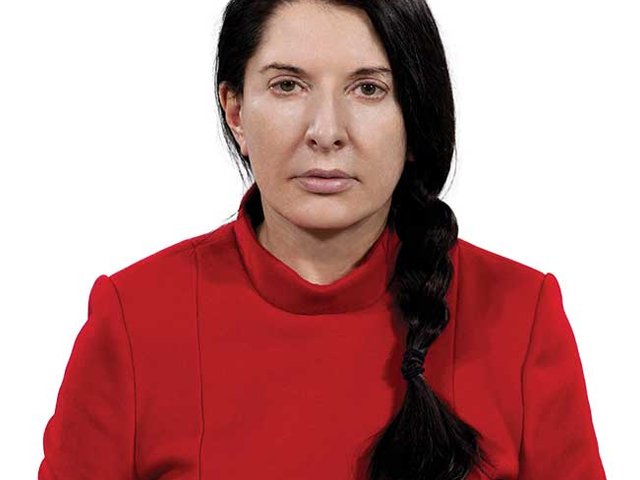The Belgrade-born superstar Marina Abramović has achieved cult status in the art world over the past decade or so, culminating in her current major retrospective at the Royal Academy (RA)—the first time a woman has had a solo show in the historic Main Galleries in the London institution’s 255-year history.
Her market has yet to reach such highs though; according to data provided by Art Market Research, only six works have achieved more than £50,000 at auction. This is perhaps unsurprising, given the chronic undervaluing of female artists throughout history as well as the fact that her practice has been chiefly rooted in performance, a deliberately temporary and transitory medium that fell out of fashion several decades ago, only to see a mini-revival in the 1990s. As she says on The Art Newspaper’s The Week in Art podcast: “At the end of the 1970s, performance was not popular any more... Galleries weren’t selling it and museums weren’t showing it. There was huge pressure on artists to start making paintings and objects.”
Abramović’s RA show demonstrates how her work cannot easily be pigeonholed; there is video, photography and re-stagings of her performance art. There is also sculpture, which Abramović began to produce in the late 1980s with her “transitory objects”, pieces that ask for the audience’s participation in the absence of the artist’s body. Then there are the works she created with Ulay, her former partner and collaborator. Her market is similarly kaleidoscopic. For example, she might sell a clay pillow and then a small edition of photographs and an iron chair, all within two years.

Marina Abramovic's White Space (2014), Lisson Gallery
© Marina Abramović
Prices
Abramović’s auction record came in October 2020 when Christie’s sold The Life (2018-19), a mixed-reality installation first shown at the Serpentine Gallery, London, in 2019. It achieved £287,500, well below the £400,000-£800,000 estimate and a snip of the £1m it reportedly cost to make—a reminder that the art market is slow to adopt innovation. (It was the first time a mixed-reality work had come to auction.) Consigned directly by Abramović and Todd Eckert, who directed the piece, The Life was acquired by the Faurschou Foundation in New York.
A key turning point in her market came in 2010, says Claus Robenhagen, a director at Lisson Gallery. That was the year of The Artist is Present,Abramović’s retrospective at the Museum of Modern Art in New York. As part of the show, for eight hours a day for three months, Abramović sat at a table, silently holding the gaze of whoever was sat opposite her. The artist Antony Gormley and the actor Alan Rickman were among the thousands who queued for the experience. That was also the year Lisson began to represent the artist, though the gallery’s relationship with Abramović dates back to the 1970s. “She went from being an important figure within performance art to becoming possibly the most famous and celebrated woman artist of her time,” Robenhagen says. “There was a big shift in the market; she created these large photo editions, and they started selling for good amounts of money.”
Robenhagen notes that, unlike a performance artist such as Tino Sehgal, who sells his performances via verbal instructions, Abramović’s performances are not for sale. “Marina prefers to keep ownership of the performances herself,” he says. “Institutions can exhibit them on loan, but that is done in dialogue with her in her studio.” In terms of her legacy, Robenhagen says Abramović’s studio will define how her performances will be re-staged for posterity. At present, there is no catalogue raisonné of her work.
Instead, collectors can acquire photo or video documentation; early performances are most coveted. At auction, stills of her best-known performances range in price from $30,000 to $100,000. Photographs of Balkan Baroque (1997), the critically acclaimed performance in which Abramović sat amid a pile of cattle bones, scrubbing them methodically with a metal brush, have fetched between $21,590 and $44,121. Winning her the Golden Lion at the 1997 Venice Biennale, the work was created in response to the war in former Yugoslavia.
Primary market prices for Abramović’s more recent works are much higher. In 2021, Lisson Gallery mounted two related shows by the artist, originally scheduled to coincide with the RA show, which was postponed due to Covid-19 restrictions. One featured a cinematic film, Seven Deaths, in which Abramović enacts the deaths of seven protagonists in famous operas—usually at the hands of a man, played by the Hollywood actor Willem Dafoe. The installation, which exists in five editions, starts at €250,000. The second show consisted of seven alabaster wall sculptures, each relating to a death scene in the film. Prices range from €250,000 to €400,000.
Alongside Lisson, Abramović is represented by Sean Kelly in New York, though she also has more fluid working relationships with Luciana Brito Galeria in São Paulo, Lia Rumma in Milan, Vienna’s Galerie Krinzinger and Galleri Brandstrup in Oslo.

Marina Abramović's Portrait with Onions (2008) and Still Life with Potatoes (2008), Lisson Gallery
© Marina Abramović
Collectors
Abramović’s work is gaining traction with a newer generation of collectors. According to Robenhagen, in more recent years private museums and patrons in China and Brazil have begun to acquire her work. Historically, the artist has had a big following in Europe and the US, particularly among institutions. They include the Louisiana Museum of Modern Art in Denmark, the San Francisco Museum of Modern Art, the Museum of Modern Art in New York and the Stedelijk Museum voor Actuele Kunst in Amsterdam. The Tate in London owns a single work by Abramović: one of three editions of Rhythm 0 (1974), a table draped in a white cloth set with 69 objects, the remnants of a harrowing six-hour performance in which the audience was instructed to use the objects on Abramović as they wished. Another edition was sold at Sotheby’s in March 2022 for £52,920.
The German collector Julia Stoschek first acquired a work by Abramović in 2004. Today she owns 33 videos and photographs dating from 1975 to 2001, 26 of which were made together with Ulay. Stoschek notes how Abramović was one of the very first artists to have entered her collection, adding: “Building a media and performance art collection, you simply can’t ignore Marina’s pioneering work.”

Marina Abramović's Seven Deaths (2021), Lisson Gallery
© Marina Abramović
Critics
Some reviewers criticised the RA show for its use of actors to re-stage her performances, which raises vital questions about the meaning of a practice so rooted in the artist’s own body, but also about how Abramović’s estate might be handled. Like her nebulous market, it is no mean feat to present work that largely exists as documentation. But, as Robenhagen puts it, “Marina is without a doubt one of the big, big artists of art history. And as that history is re-written, her importance will only become even more apparent.”





